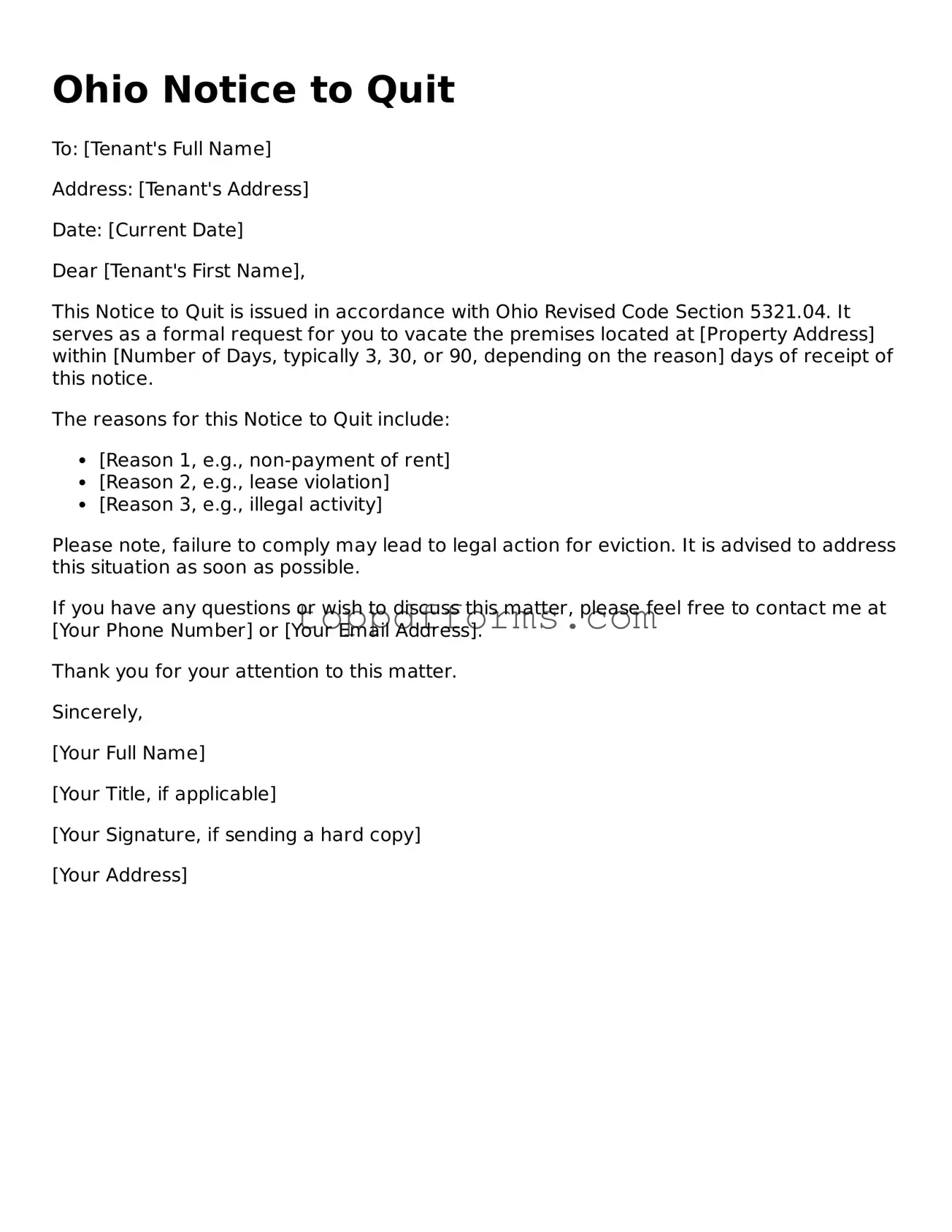What is the Ohio Notice to Quit form?
The Ohio Notice to Quit form is a legal document that a landlord uses to notify a tenant that they must vacate the rental property. This notice typically indicates the reason for the eviction and provides a timeframe for the tenant to leave the premises.
When should a landlord use the Notice to Quit?
A landlord should use the Notice to Quit when a tenant has violated the terms of the lease, failed to pay rent, or engaged in illegal activities on the property. It serves as a formal warning before further legal action is taken.
How much notice must be given to the tenant?
The amount of notice required depends on the reason for the eviction. For non-payment of rent, a landlord must typically give a 3-day notice. For lease violations, a 30-day notice may be appropriate. Always check local laws for specific requirements.
Can a tenant contest a Notice to Quit?
Yes, a tenant can contest a Notice to Quit. If they believe the notice is unjust or that they have rectified the issue, they can respond to the landlord or take legal action to dispute the eviction.
What happens if the tenant does not leave by the deadline?
If the tenant does not vacate the property by the deadline specified in the Notice to Quit, the landlord may proceed with filing an eviction lawsuit. This legal action will require the landlord to go to court to seek a formal eviction order.
Is the Notice to Quit the same as an eviction notice?
No, the Notice to Quit is not the same as an eviction notice. The Notice to Quit is a preliminary step that informs the tenant to leave, while an eviction notice is issued after a court order has been obtained to remove the tenant from the property.
Do I need to provide a reason in the Notice to Quit?
Yes, it is advisable to provide a reason in the Notice to Quit. This helps clarify the situation for the tenant and can be important if the matter escalates to court. Clear communication can often resolve issues without further action.
Can a tenant receive a Notice to Quit if they are current on rent?
Yes, a tenant can receive a Notice to Quit even if they are current on rent. If they are violating other terms of the lease, such as causing disturbances or damaging property, a landlord can still issue this notice.
How should the Notice to Quit be delivered?
The Notice to Quit should be delivered in a manner that ensures the tenant receives it. This can include personal delivery, certified mail, or posting it on the door of the rental unit. Proper delivery is important for legal purposes.
Are there any specific forms required for the Notice to Quit?
While there is no official state form for the Notice to Quit, it is important to include certain key elements such as the date, tenant's name, reason for eviction, and the deadline to vacate. Using a clear format will help ensure the notice is valid.
